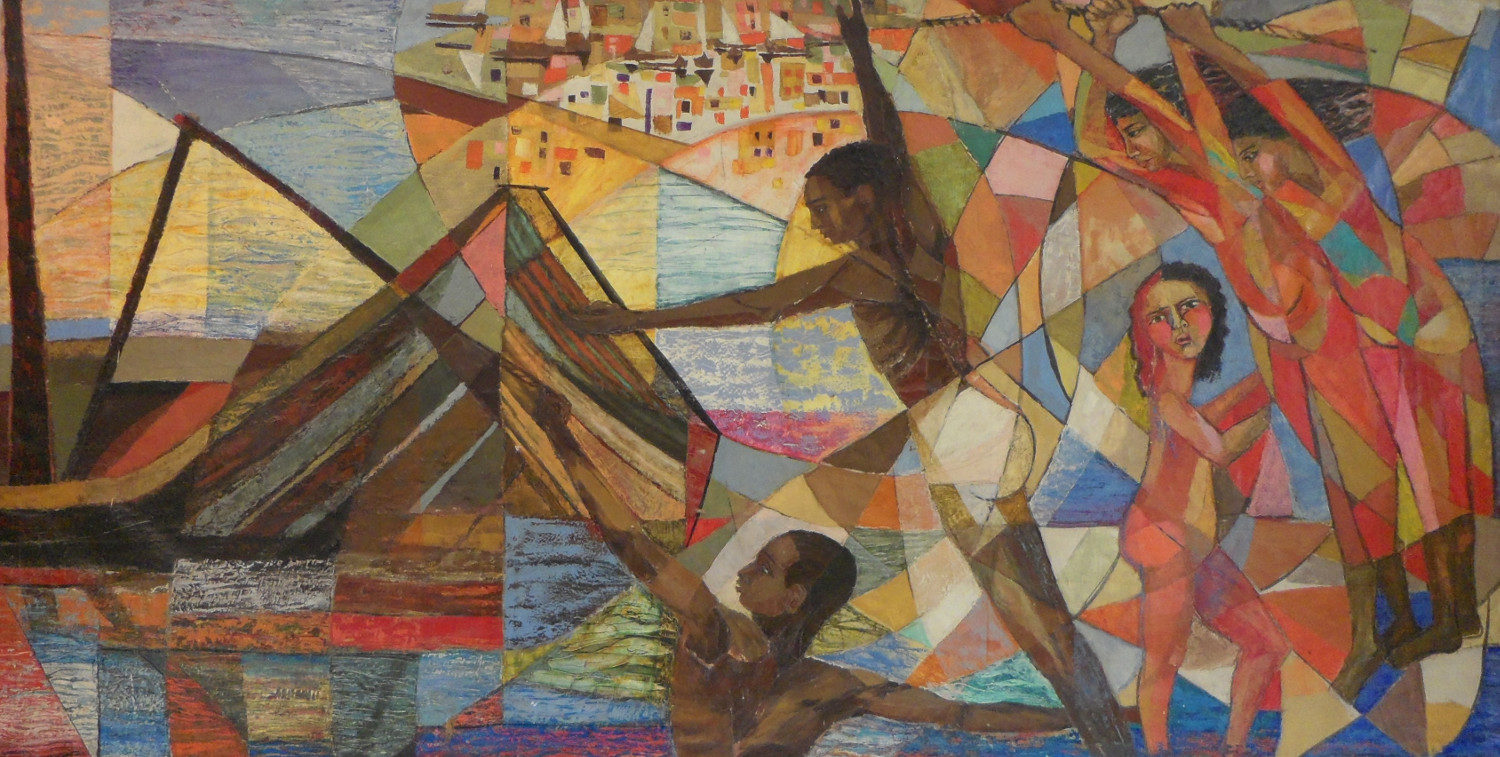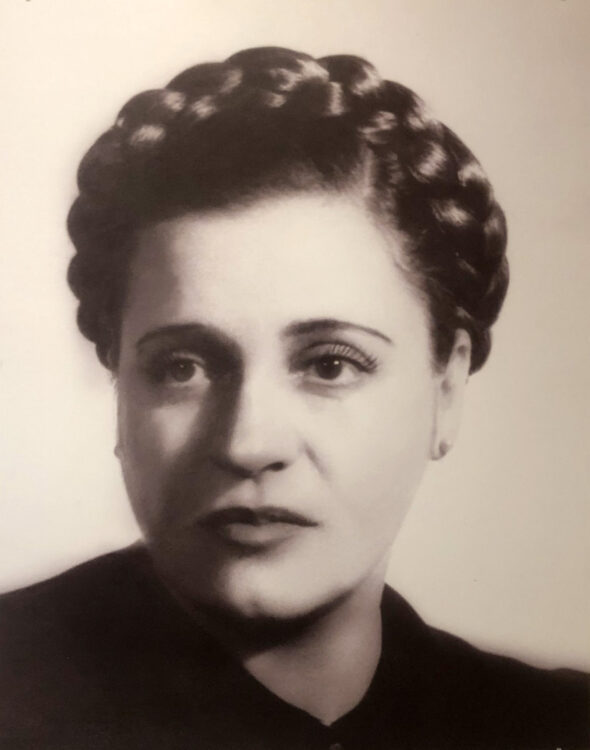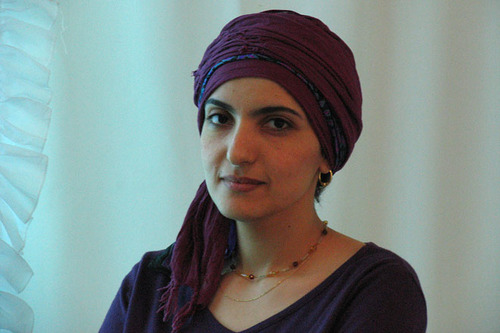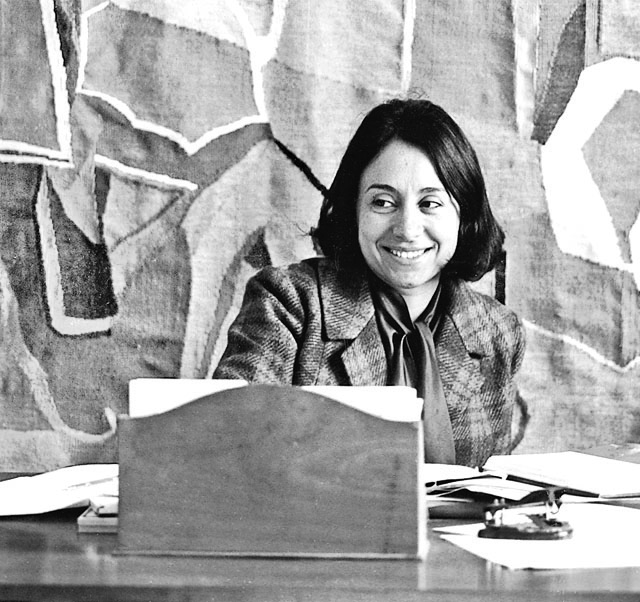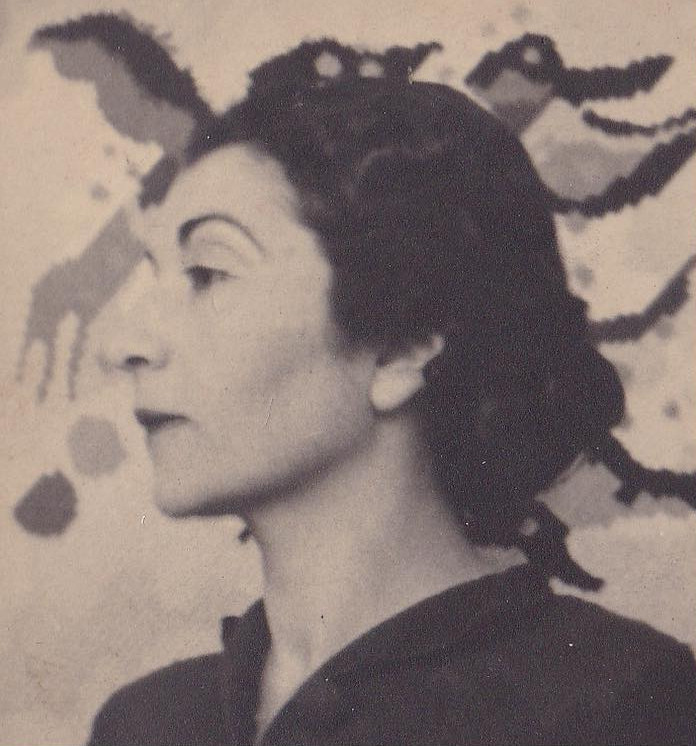Research
Gazbia Sirry, Life on the Embankment of the Nile (II), 1960, oil on canvas, unknown dimensions, American University in Cairo, Cairo, Courtesy the Rare Books and Special Collections Library, The American University in Cairo
As of the start of the 20th century, women were recognised in Egypt as having an important role in modern art. Among those women, Inji Efflatoun (1924-1989) and Gazbia Sirry (1925-2021) were widely recognised. Each of these painters developed a very different style, which, in both cases, evolved over the course of Egypt’s history: first expressing the enthusiasm for the 1952 revolution, then adopting more sombre tones during the dark years of Nasserism, finally becoming pared down painting that let the white of the canvas show through. Both artists had feminist convictions – Inji Efflatoun was an activist whereas Gazbia Sirry kept her convictions more private –, and a sense of nationalism, at a time where Egypt was gaining independence.

In front of the musée Galliera, Paris, on the occasion of the exhibition Visages of Contemporary Egyptian Art, 1971, from left to right: Adam Henein, Tahia Halim, Inji Efflatoun, Unknown et Gazbia Sirry, Courtesy Safarkhan Art Gallery
By detailing the history of Inji Efflatoun and Gazbia Sirry’s exhibitions, this research paper doesn’t limit itself to emphasising the importance of women’s participation in the modern art movement in Egypt; it also reflects upon the circumstances that allowed it. One of its challenges is to define methods that are likely to de reflect the work of artists that are on the sidelines of history because of their gender and their geocultural affiliation. That is the reason for the focus on the bias of the history of the exhibitions: it allows for the analysis of both the cosmetic appearance of the artists’ work and the social and political context that influenced its form and diffusion. Moreover, the crossover study of the two artists reveals a diversity of women experiences in modern Egypt and underlines the capacity of each one to act on her own course.

Inji Efflatoun, Soldier (Fedayeen), 1970, oil on canvas on wood, 79 x 34 cm, Courtesy Safarkhan Art Gallery

Gazbia Sirry, Life on the Embankment of the Nile (II), 1960, oil on canvas, unknown dimensions, American University of Cairo, Cairo, Courtesy the Rare Books and Special Collections Library, The American University in Cairo
The drawing up of lists of exhibitions using scattered sources together with in-depth case studies allow one to pinpoint two moments in the mediatisation of Inji Efflatoun and Gazbia Sirry’s works. The first of these moments coincides with the Nasserian era (1952-1970), which is characterised by exhibition-narratives rolling out the topos of women’s emancipation to assert Egypt’s modernity. At the time, Gazbia Sirry mainly presented her works in state-owned places, whereas Inji Efflatoun was starting off by exhibiting in privately owned galleries in Cairo. Beyond the perceived opposition between the official artist and independent artist, both participated in the biennales that revealed modern Egypt to the rest of the world. The second period (1970-2016) started with Anouar al-Sadate’s open, liberal policies. The internationalisation of the artists’ careers took off and their exhibitions, more frequent in the West, started to address the identities of women, Egyptian women, Arab women, African women. Thus the history of Inji Efflatoun and Gazbia Sirry’s exhibitions brings to light the fluctuations in relationships between the Egyptian nation – in the sense of the State and the organising principles of a community–, and the worlds of art and women, from the start of the 1950s to the present day. This memoir is the cornerstone of an ongoing thesis devoted to the exhibitions of women artists in Egypt from 1952 to 1975.
Master 2 research paper, directed by Dominique Poulot, with the advice of Mercedes Volait, and defended by Nadine Atallah, on 24th June 2016, at Université Paris 1 – Panthéon-Sorbonne.
Nadine Atallah, "Women, art and the nation. History of the exhibitions of two Egyptian women artists, from the 1950s to the present day: Inji Efflatoun and Gazbia Sirry." In Archives of Women Artists, Research and Exhibitions magazine, . URL : https://awarewomenartists.com/en/magazine/femmes-lart-nation-histoire-expositions-de-deux-artistes-egyptiennes-annees-1950-a-nos-jours-inji-efflatoun-gazbia-sirry/. Accessed 14 July 2025
